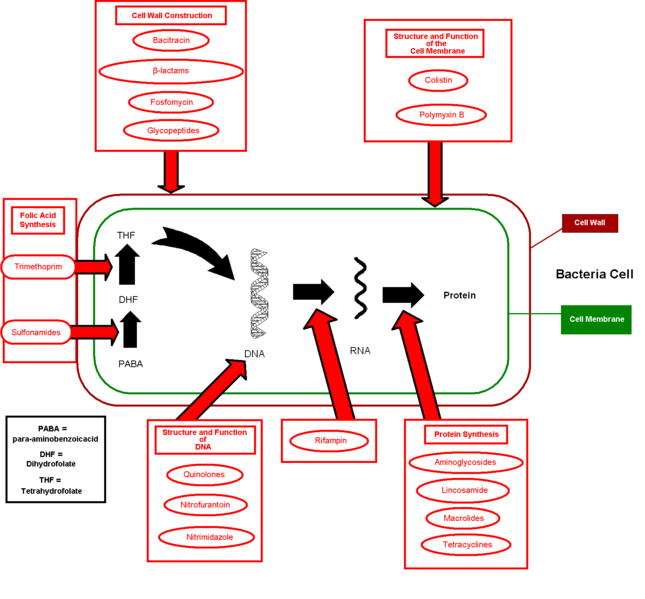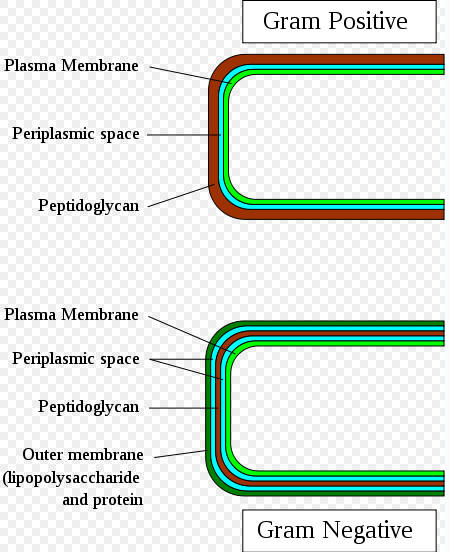
6.3 Defense against infectious disease
An immune system is a collection of biological processes within an organism that protects against disease by identifying and killing pathogens and tumour cells. It detects a wide variety of agents, from viruses to parasitic worms, and needs to distinguish them from the organism's own healthy cells and tissues in order to function properly. Detection is complicated as pathogens can evolve rapidly, producing adaptations that avoid the immune system and allow the pathogens to successfully infect their hosts.
The immune systems of vertebrates consist of many types of proteins, cells, organs, and tissues, which interact in an elaborate and dynamic network. As part of this more complex immune response, the human immune system adapts over time to recognise specific pathogens more efficiently. This adaptation process is referred to as "adaptive immunity" or "acquired immunity" and creates immunological memory. Immunological memory created from a primary response to a specific pathogen, provides an enhanced response to secondary encounters with that same, specific pathogen. This process of acquired immunity is the basis of vaccination
Immune response animation: http://highered.mcgraw-hill.com/sites/0072507470/student_view0/chapter22/animation__the_immune_response.html
The Cells of the Immune SystemT-Cells -- T lymphocytes are usually divided into two major subsets that are functionally and phenotypically (identifiably) different. The T helper subset, also called the CD4+ T cell, is a pertinent coordinator of immune regulation. The main function of the T helper cell is to augment or potentiate immune responses by the secretion of specialized factors that activate other white blood cells to fight off infection.Another important type of T cell is called the T killer/suppressor subset or CD8+ T cell. These cells are important in directly killing certain tumor cells, viral-infected cells and sometimes parasites. The CD8+ T cells are also important in down-regulation of immune responses. Both types of T cells can be found throughout the body. They often depend on the secondary lymphoid organs (the lymph nodes and spleen) as sites where activation occurs, but they are also found in other tissues of the body, most conspicuously the liver, lung, blood, and intestinal and reproductive tracts. Natural Killer Cells -- Natural killer cells, often referred to as NK cells, are similar to the killer T cell subset (CD8+ T cells). They function as effector cells that directly kill certain tumors such as melanomas, lymphomas and viral-infected cells, most notably herpes and cytomegalovirus-infected cells. NK cells, unlike the CD8+ (killer) T cells, kill their targets without a prior "conference" in the lymphoid organs. However, NK cells that have been activated by secretions from CD4+ T cells will kill their tumor or viral-infected targets more effectively. B Cells -- The major function of B lymphocytes is the production of antibodies in response to foreign proteins of bacteria, viruses, and tumor cells. Antibodies are specialized proteins that specifically recognize and bind to one particular protein that specifically recognize and bind to one particular protein. Antibody production and binding to a foreign substance or antigen, often is critical as a means of signaling other cells to engulf, kill or remove that substance from the body. Granulocytes or Polymorphonuclear (PMN) Leukocytes -- Another group of white blood cells is collectively referred to as granulocytes or polymorphonuclear leukocytes (PMNs). Granulocytes are composed of three cell types identified as neutrophils, eosinophils and basophils, based on their staining characteristics with certain dyes. These cells are predominantly important in the removal of bacteria and parasites from the body. They engulf these foreign bodies and degrade them using their powerful enzymes. Macrophages -- Macrophages are important in the regulation of immune responses. They are often referred to as scavengers or antigen-presenting cells (APC) because they pick up and ingest foreign materials and present these antigens to other cells of the immune system such as T cells and B cells. This is one of the important first steps in the initiation of an immune response. Stimulated macrophages exhibit increased levels of phagocytosis and are also secretory. Dendritic Cells -- Another cell type, addressed only recently, is the dendritic cell. Dendritic cells, which also originate in the bone marrow, function as antigen presenting cells (APC). In fact, the dendritic cells are more efficient apcs than macrophages. These cells are usually found in the structural compartment of the lymphoid organs such as the thymus, lymph nodes and spleen. However, they are also found in the bloodstream and other tissues of the body. It is believed that they capture antigen or bring it to the lymphoid organs where an immune response is initiated. Unfortunately, one reason we know so little about dendritic cells is that they are extremely hard to isolate, which is often a prerequisite for the study of the functional qualities of specific cell types. Of particular issue here is the recent finding that dendritic cells bind high amount of HIV, and may be a reservoir of virus that is transmitted to CD4+ T cells during an activation event. |
6.3.1 Pathogen
A pathogen- infectious agent, or (more commonly) germ, is a biological agent that causes disease or illness to its host.[1][2] There are several substrates and pathways whereby pathogens can invade a host; the principal pathways have different episodic time frames, but soil contamination has the longest or most persistent potential for harboring a pathogen.
-Below is a list of different types of notable pathogens as categorized by their structural characteristics, and some of their known and predicted effects on infected host.
Viral
Further information:
Table of clinically important viruses
Pathogenic viruses are mainly those of the families of: Adenoviridae, Picornaviridae, Herpesviridae, Hepadnaviridae, Flaviviridae, Retroviridae, Orthomyxoviridae, Paramyxoviridae, Papovaviridae, Rhabdoviridae, Togaviridae. Some notable pathogenic viruses cause: smallpox, influenza, mumps, measles, chickenpox and rubella. Ebola is another pathogenic virus. Viruses typically range from between 20-300 nanometers in length. BacterialAlthough the vast majority of bacteria are harmless or beneficial, a few pathogenic bacteria can cause infectious diseases. The most common bacterial disease is tuberculosis, caused by the bacterium Mycobacterium tuberculosis, which effect about 2 million people mostly in sub-Saharan Africa. Pathogenic bacteria contribute to other globally important diseases, such as pneumonia, which can be caused by bacteria such as Streptococcus and Pseudomonas, and foodborne illnesses, which can be caused by bacteria such as Shigella, Campylobacter and Salmonella. Pathogenic bacteria also cause infections such as tetanus, typhoid fever, diphtheria, syphilis and leprosy. Bacteria can often be killed by antibiotics. They typically range from between 1-5 micrometers in length. FungalFungal microbes can cause diseases in humans, animals and crop plants. Fungi most often infect immuno-compromised patients or vulnerable people with a weakend immune system. Most antibiotics cannot be used to treat fungal infections due to the fact that fungi and their hosts both have eukaryotic cells. Most clinical fungicides belong to the azole group. The typical fungal spore size is 1-40 micrometer in length. |
|
6.3.2 Antibiotics
The term "antibiotic" (from the Ancient Greek: ἀντί – anti, "against" and Ancient Greek: βίος – bios, "life") was coined by Selman Waksman in 1942 to describe any substance produced by a micro-organism that is antagonistic to the growth of other micro-organisms in high dilution.[2] This original definition excluded naturally occurring substances, such as gastric juice and hydrogen peroxide (they kill bacteria but are not produced by micro-organisms), and also excluded synthetic compounds such as the sulfonamides (which are antimicrobial agents). Many antibiotics are relatively small molecules with a molecular weight less than 2000 Da.[citations needed]
With advances in medicinal chemistry, most antibiotics are now modified chemically from original compounds found in nature,[3] as is the case with beta-lactams (which include the penicillins, produced by fungi in the genus Penicillium, the cephalosporins, and the carbapenems). Some antibiotics are still produced and isolated from living organisms, such as the aminoglycosides; in addition, many more have been created through purely synthetic means, such as the quinolones

6.3.4 Phagocytosis
The process is only homologous to eating at the level of single-celled organisms; in multicellular animals, the process has been adapted to eliminate debris and pathogens, as opposed to taking in fuel for cellular processes, except in the case of the Trichoplax
Animation: http://highered.mcgraw-hill.com/sites/0072495855/student_view0/chapter2/animation__phagocytosis.html

6.3.5 Antigens
Antigens are usually proteins or polysaccharides. This includes parts (coats, capsules, cell walls, flagella, fimbrae, and toxins) of bacteria, viruses, and other microorganisms. Lipids and nucleic acids are antigenic only when combined with proteins and polysaccharides. Non-microbial exogenous (non-self) antigens can include pollen, egg white, and proteins from transplanted tissues and organs or on the surface of transfused blood cells.
Cells present their antigens to the immune system via a histocompatibility molecule. Depending on the antigen presented and the type of the histocompatibility molecule, several types of immune cells can become activated.
Antigen processing animation: http://highered.mcgraw-hill.com/sites/0072507470/student_view0/chapter22/animation__antigen_processing.html
6.3.6 Antibody production
T-cell dependent antigens: http://highered.mcgraw-hill.com/olc/dl/120110/micro33.swf
Monoclonal antibody production: http://highered.mcgraw-hill.com/sites/0072556781/student_view0/chapter32/animation_quiz_3.html
6.3.7 HIV
Human immunodeficiency virus (HIV) is a lentivirus (a member of the retrovirus family) that can lead to acquired immunodeficiency syndrome (AIDS), a condition in humans in which the immune system begins to fail, leading to life-threatening opportunistic infections. Previous names for the virus include human T-lymphotropic virus-III (HTLV-III), lymphadenopathy-associated virus (LAV), and AIDS-associated retrovirus (ARV)
 |
|
| HIV | HIV Cycle: |
HIV cycle animation: http://highered.mcgraw-hill.com/sites/0072507470/student_view0/chapter22/animation__how_the_hiv_infection_cycle_works.html
6.3.8- AIDS-Social implications
AIDS Pandemic: http://en.wikipedia.org/wiki/AIDS_pandemic